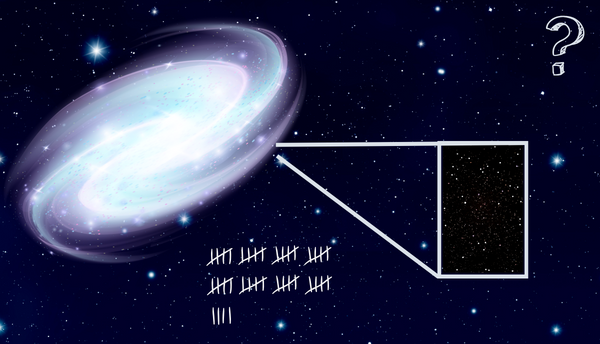Galaxies are collections of millions, or billions of stars. The Milky Way is the galaxy in which we live, orbiting around it’s centre in a distant spiral arm. But when we look into the night sky the stars look similar in every direction we look, so how do we know where we are?
Use this investigation to take observations inside and outside of our galaxy, to compare the number of stars and think a little more about the structure of the Milky Way.
By the end of this resource you will:
- have used a robotic telescope to take observations.
- carry out an investigation to compare 2 patches of the night sky, one inside and one outside of our galaxy.
- have opened and analysed your observations in specialist software.
- have drawn conclusions from your investigation.
To complete this resource you will need:
- Access to Go Observing through your Schools’ Observatory log in.
- Access to the internet
- Access to our software
- Investigation planning and results worksheets

Have a go!
Step 1. Open the Investigation Planning worksheet and fill in the boxes. Your equipment is the Liverpool Telescope, and you may want to write a bit about it in this space.
Step 2. Make your prediction.
Step 3. Log into The Schools’ Observatory Website
Step 4. Head to Go Observing
Step 5. Select Advanced Options>Counting Stars in the Milky Way or follow this link
Step 6. Follow the instructions to submit your observations.
Step 7. Write down your observation IDs on the worksheet.
Step 8. Wait for your observations to return.
Step 9. Open your observations in our software.
Step 10. Scale your observation to make sure that you can see all of the stars contained within the image.
Step 11. Count the stars visible in each image and make a note on your Investigation Results sheet.
Step 12. Use the Investigation Results sheet to guide you through analysing and presenting your data.
Step 13. Make your conclusions! What has this taught you about the shape of the Milky Way and our position within it?
